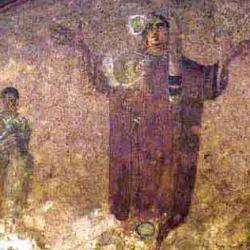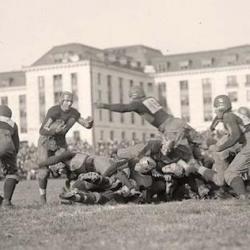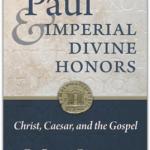Popular cliche is that Lutherans and Anglicans are high-church, Reformed lower. Lutherans and Anglicans are sacramentally-minded, Reformed less so. Lutherans and Anglicans take liturgy serious; Reformed do not.
There’s reason to think this isn’t right. In fact, there are reasons to think that the opposite is the case.
Consider the “second reformation” struggles between Lutheran and Reformed in post-Reformation Brandenburg. On Christmas Day 1613, John Sigismund, the Elector of Brandenburg, communed in a Reformed church in a Reformed manner, a signal that he wanted to pursue further reform beyond the Lutheran that had dominated Brandenburg in the previous century. He didn’t impose his convictions on his people, and so Brandenburg became a locus of ongoing debate, centered on liturgical issues like the fractio panis (breaking bread in communion, which Lutherans didn’t do and Reformed did) and the baptismal exorcism (Reformed didn’t, Lutherans did).
Bodo Nischan summarizes their respective theologies of ceremony in an article from the Sixteenth Century Journal:
“Lutherans regarded most of the things that the Reformed wanted to see removed as adiaphora, or matters of indifference, that could be freely used or omitted in the worship service. In the mid-sixteenth century they themselves had debated this issue in the ‘adiaphoristic controversy.’ This controversy, which was born out of the conflict over the Leipzig Interim and involved divergent interpretations of Luther’s message, however, had been settled by the Formula of Concord in 1577. The Formula defined adiaphora as ‘ceremonies and church rites which are neither commanded nor forbidden in the Word of God.’ It specifically excluded ‘ceremonies which give or are designed to give the impression that our religion does not differ greatly from that of the papists.’ ‘True adiaphora . . . are in and of themselves no worship of God or even a part of it.’ Churches therefore should ‘not condemn each other because of a difference in ceremonies, when in Christian liberty one uses fewer or more of them’” (185).
Note: If a ceremony gave the impression that Lutherans were tilting back to Rome, it was no longer adiaphoric.
On the other hand, “the Reformed wondered if Lutherans themselves actually meant what they said about adiaphora. If certain liturgical practices really were as non-essential as they claimed, why, then, had they made them mandatory in the Mark? ‘What has happened to the adiaphoron?’ ‘Indifferent means’ actually had come to be legalistic requirements. This not only distorted the Reformation’s true evangelical heritage but jeopardized Christian freedom itself. Even worse, the seemingly unimportant liturgical practices retained by the Mark’s Lutherans were far more dangerous than most people thought. What Lutherans still tolerated as ‘adiaphora,’ the Reformed viewed as ‘papal’ or ‘superstitious ceremonies,’ as ‘Catholic idols,’ ‘relics of popery,’ or ‘anti-Christian insignia.’ Summarized Fussel: ‘Even though vestments, burning candles, and similar ceremonies are in and by themselves unimportant . . . they actually are not adiaphora but anti-Christian abominations since they are the tools . . . of anti- Christ’” (186).
For the Lutherans, ceremonies could be inert or only mildly potent: Vestments might enhance worship, but their use would not have a large impact on the worshiper either way. For the Reformed, ceremonies were invariably powerful, whether for good or evil, both because they pleased or displeased God and because they might edify or mislead worshipers. Especially when ceremonies have a history, they cannot be treated as neutral adornments. Such ceremonies almost function ex opere operato: Whatever Lutherans might intend with their Popishness, the ceremonies have a life of their own and do things to the church and its members.
I am not judging the rights and wrongs of the debate. But this vignette supports the claim that the Reformed attributed more potency to liturgical ceremonies than Lutherans.
(Nischan, “The Second Reformation in Brandenburg: Aims and Goals”, Sixteenth Century Journal 14:2 [1983]: 173-87).













